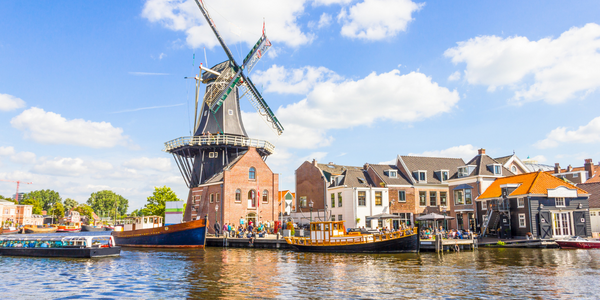Applicable Industries
- Cities & Municipalities
- Education
Applicable Functions
- Logistics & Transportation
- Quality Assurance
Use Cases
- Driver Performance Monitoring
- Virtual Training
Services
- Testing & Certification
- Training
About The Customer
Cabify is a ride-hailing company founded in Madrid, Spain in 2011. The company values all its customers, passengers, and drivers, and believes in charging a fair price, improving the door-to-door journey, and making transport accessible to all. Cabify prides itself on its humanity and is committed to building a mission-driven company, never sacrificing quality for short-term business goals. The company has a long-horizon view and has experienced quick success. However, when it came to scaling globally, Cabify faced significant challenges due to the fierce competition in the emerging ride-sharing industry.
The Challenge
Cabify, a Madrid-based ride-hailing company, was facing significant challenges in scaling its operations globally. The company was in a fiercely competitive ride-sharing industry and needed to onboard its drivers quickly and efficiently without compromising its high standards. The onboarding process was lengthy, taking up to 16 hours for one driver, largely due to their thorough screening and training process. This was a major bottleneck, as some drivers had to travel for up to three hours to attend a training class, slowing down the onboarding process and potentially affecting driver retention. As Cabify expanded, it also faced scalability challenges. A high-touch approach to hiring was not feasible given the rate of the company's expansion. An in-house solution that provided flexibility was not an option, as everything in the ride-hailing industry had to be invented and reinvented every five minutes.
The Solution
Cabify partnered with Fountain to create a custom hiring workflow that included the creation of an online driver training experience. This solution provided Cabify with the flexibility, control, and scalability it needed. Fountain's hiring software helped Cabify automate core parts of its multi-touch hiring process. One of the most pivotal changes was the decision to create an online driver training experience, which allowed drivers to learn from anywhere on any device. This increased the efficiency of Cabify's hiring funnels. In addition to an efficient and seamless training process, Cabify worked with Fountain to orchestrate precise, data-driven funnels. Instead of having to create work funnels manually, Cabify was now able to define a funnel based on millions of A/B tests that they conducted in their cities, to identify their target demographic for drivers.
Operational Impact
Quantitative Benefit

Case Study missing?
Start adding your own!
Register with your work email and create a new case study profile for your business.
Related Case Studies.

Case Study
Turning A Stadium Into A Smart Building
Honeywell created what it called the “intelligent system” for the National Stadium in Beijing, China, turning the venue for the opening and closing events at the 2008 Summer Olympics into a “smart building.” Designed by highly controversial artist Ai Weiwei, the “Bird’s Nest” remains one of the most impressive feats of stadium architecture in the world. The 250,000 square meter structure housed more than 100,000 athletes and spectators at a time. To accommodate such capacity, China turned to Honeywell’s EBI Integrated Building Management System to create an integrated “intelligent system” for improved building security, safety and energy efficiency.
.png)
Case Study
Smart Street Light Network (Copenhagen)
Key stakeholders are taking a comprehensive approach to rethinking smart city innovation. City leaders have collaborated through partnerships involving government, research institutions and solution providers. The Copenhagen Solutions Lab is one of the leading organizations at the forefront of this movement. By bringing together manufacturers with municipal buyers, the Copenhagen Solutions Lab has catalyzed the development and deployment of next-generation smart city innovations. Copenhagen is leveraging this unique approach to accelerate the implementation of smart city solutions. One of the primary focus areas is LED street lighting.

Case Study
Buoy Status Monitoring with LoRa
The Netherlands are well-known for their inland waterways, canals, sluices and of course port activities. The Dutch Ministry of Infrastructure indicates that there are thousands of buoys and fixed items in and near water environments that would profit from IoT monitoring. One of the problems with buoys for example, is that they get hit by ships and the anchor cable breaks. Without connectivity, it takes quite some time to find out that something has happened with that buoy. Not to mention the costs of renting a boat to go to the buoy to fix it. Another important issue, is that there is no real-time monitoring of the buoys at this moment. Only by physically visiting the object on the water, one gains insight in its status.

Case Study
Barcelona Case Study
Barcelona’s heavy traffic and its associated high levels of pollution were the primary factors that motivated some companies and universities to work on strategies for improving traffic in the city centre. Bitcarrier is one of the technologies involved in the In4Mo Project, whose main objective is to develop the applications that form the core of smart mobility, one of the fundamental pillars of the smart city concept.

Case Study
China Mobile Smart Parking
Smart Parking, powered by NB-IoT technology, is making it easier for drivers to find free parking spots. Cities can better manage their parking assets and maximize the revenue available to them as a result. Drivers searching for parking create congestion and pollution by circling and hunting for available parking. Smart Parking services are able to significantly ease these problems by guiding a driver directly to a parking space.








